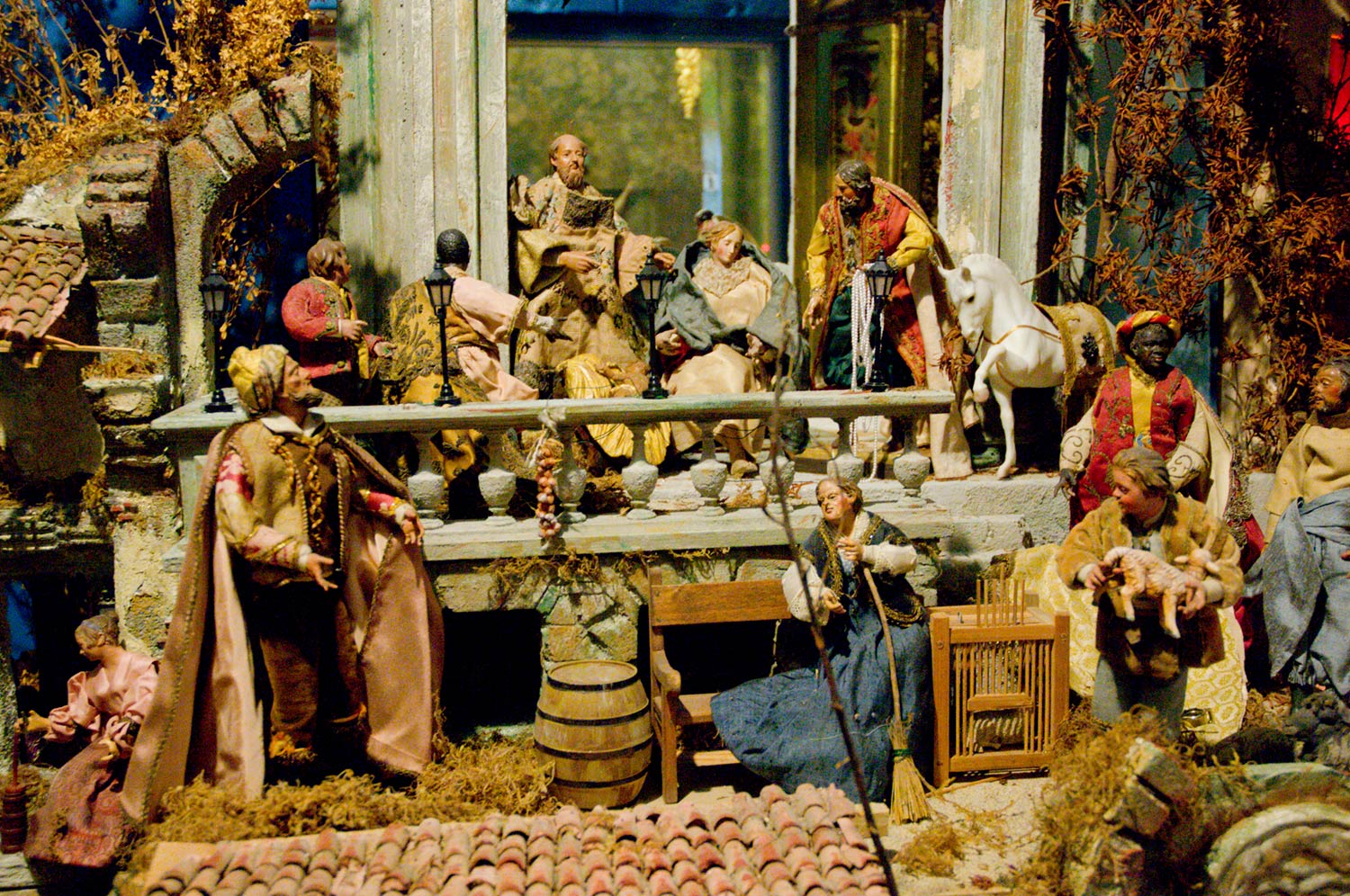Non-biblical Nativity Figures
Photos by Forrest Anderson
Why do large nativity scenes often have figures that aren't dressed in Biblical clothes? Because these scenes with multiple buildings and figurines are intended to depict village Christmas festivals that in turn include reenactments of the first Christmas rather than the original Christmas. They incorporate not just the original story of Christ's birth, but also village Christmas traditions from the countries from which they came.
This particular subset of both Christmas art and nativity scenes is international, having evolved as it was passed along as part of the Christian diaspora and been combined with art traditions from around the world. Sometimes local traditions of making miniature figures melded with the nativity scene tradition to create nativity scenes that exhibit many indigenous characteristics.
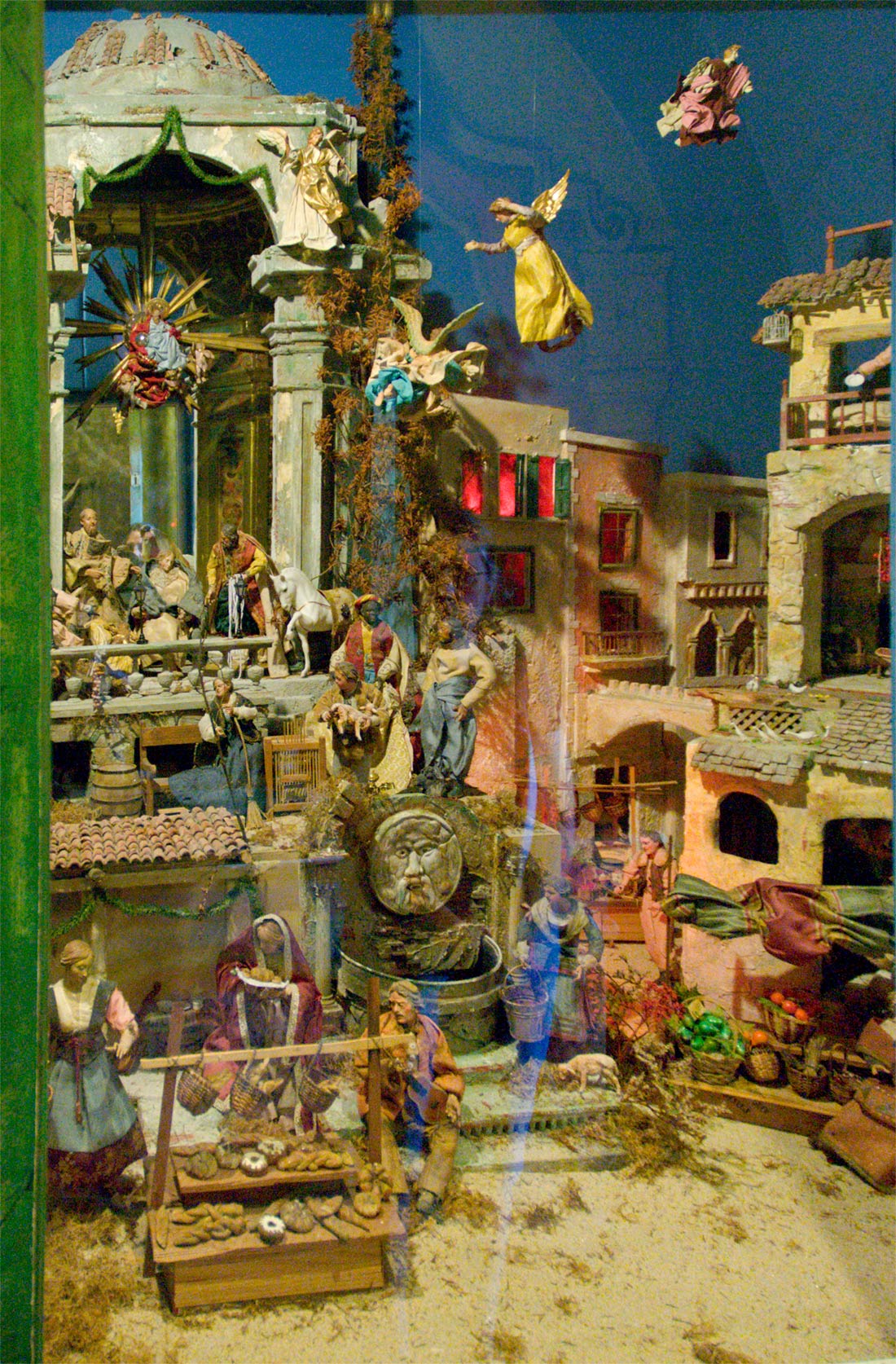
These elaborate village nativity scenes include not just religious figures but many secular ones such as the bread seller at the bottom of this photo. Some include dozens of angels like the ones suspended in the air in this scene.
In these miniature scenes, figures depicting Mary, Joseph and the other principals of the traditional Christmas scene become tiny actors who are the focus of annual Christmas festivals played out in villages throughout the Christian world, especially the Catholic world.
Nativity scenes are believed to have been an outgrowth of Christmas religious plays and processions that were staged as part of Christmas mass in Medieval and later times to teach lay people who were largely illiterate about such Christian doctrines as the fall of Adam, the messianic teachings of the Old Testament prophets and the birth of Jesus Christ. Christian ideology became in the Middle Ages not just the predominent religion but also the state ideology, so these plays stage-managed by local priests were ways to solidify the state's control as well.
Naples, Italy, is famous for its Nativity scenes called presepio. The city has a famous street, via San Gregorio Armeno, which has hundreds of shops featuring hand-made presepi that attracts more than half a million tourists before Christmas. Craftsmen carve and paint figures as shoppers watch them.
Every Italian family has a nativity scene and they set them up starting on December 8 in their homes. Many are elaborate, with lighting, backdrops, even running water and dozens of figurines. Baby Jesus is placed in the manger on Christmas Eve, and the presepios are kept up for a month until after the feast of the Epiphany when the Three Kings join the scene.
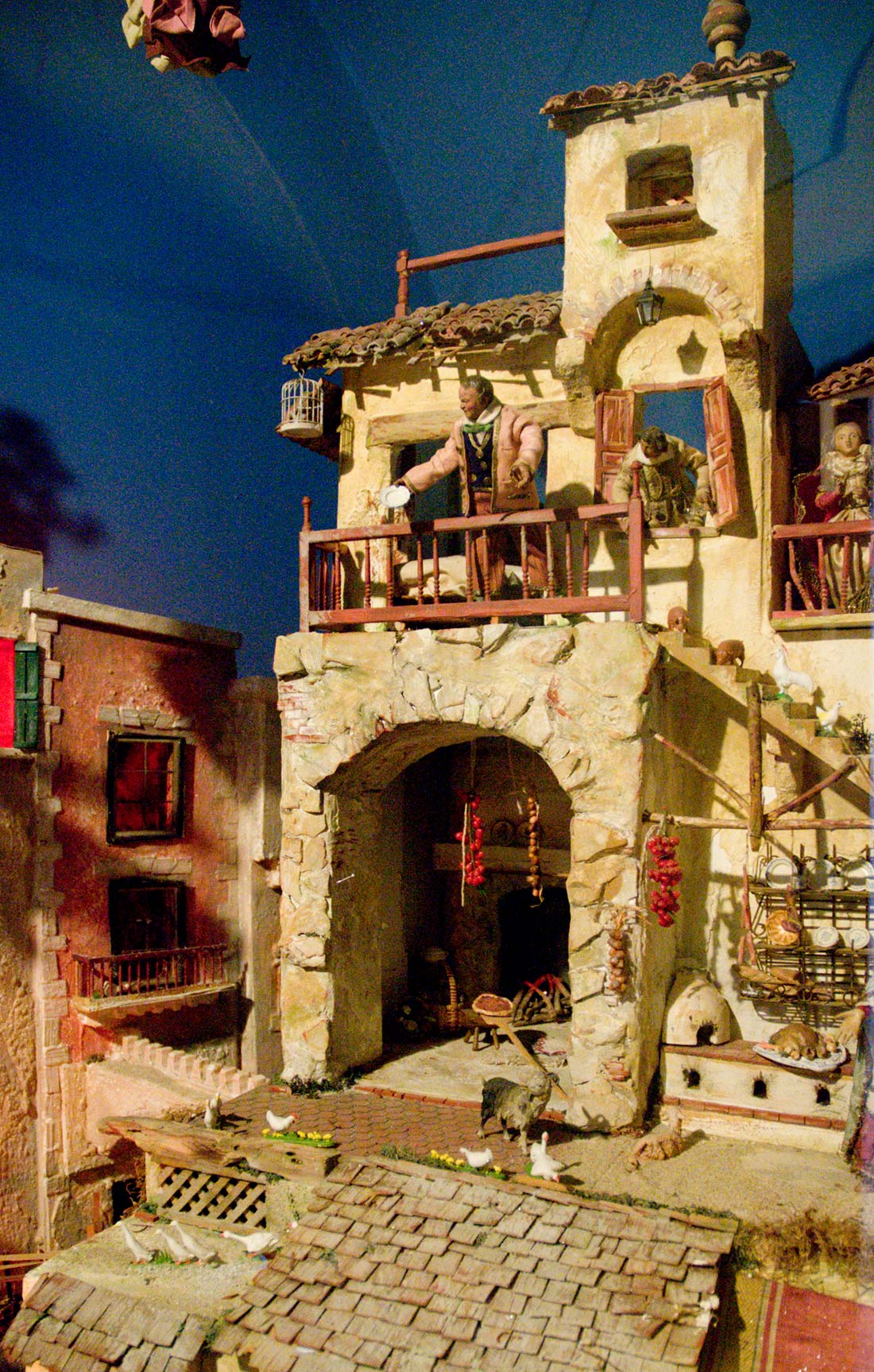
The scenes typically include miniature buildings and animals.
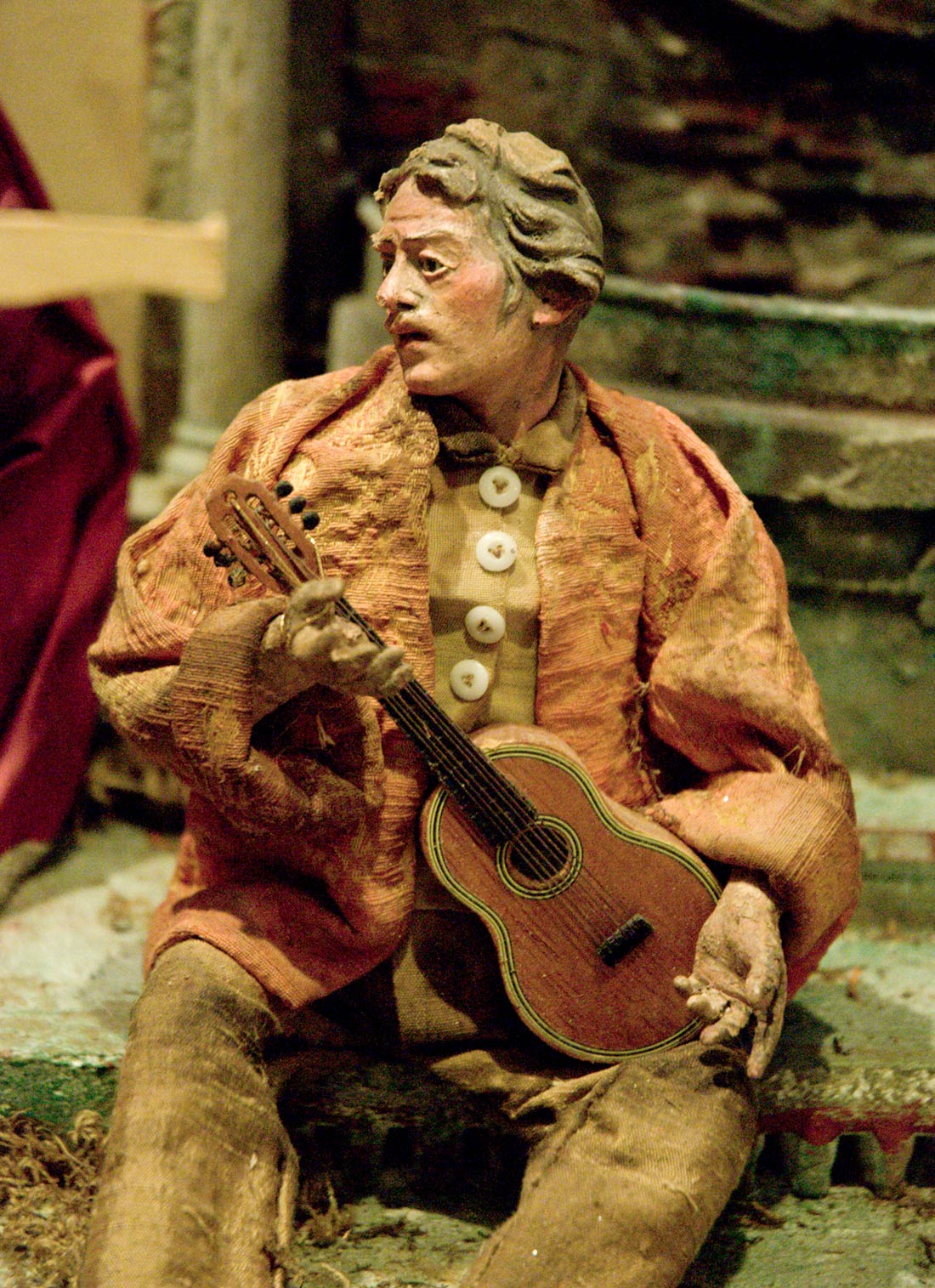
These photos and the next two show figures that are beautifully dressed in 18th century costumes and going about their daily business.

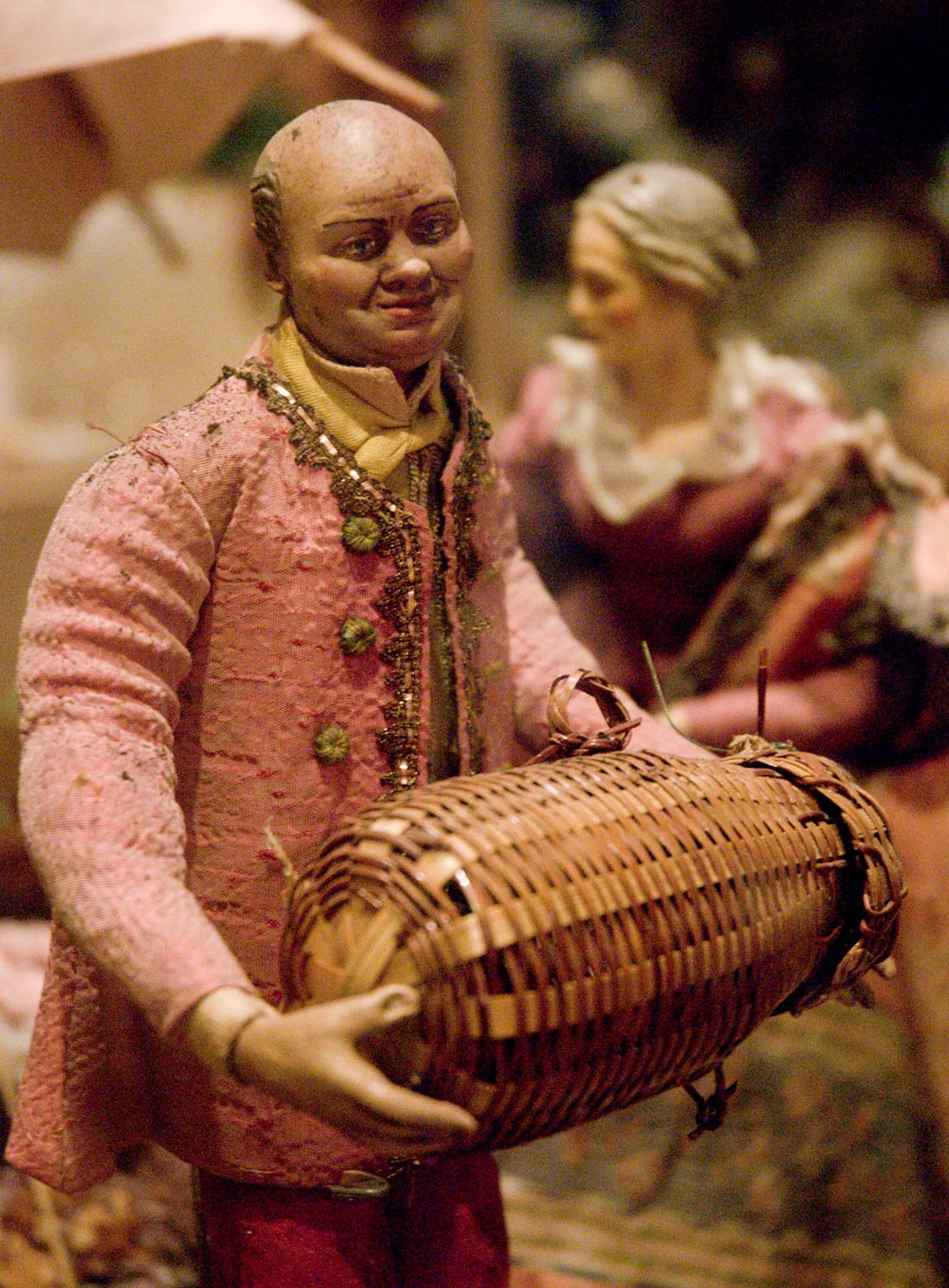
Some people believe that the Italian custom was the origin of the southern French province of Provence's famous nativity scene tradition. The tradition of the tiny scenes probably jumped the Alps from Italy, but it is believed to have taken off during the French Revolution when churches were closed, religious festivals and gatherings were banned and people couldn’t attend Christmas midnight mass with its accompanying celebration.
To celebrate Christmas, villagers made nativity scenes in their homes using figurines to represent themselves at Christmas – the village baker, the butcher, the carpenter. They used cloth, paper, twigs and other common materials to make the scenes and fashioned the figurines from clay. The scenes were a kind of village portrait in an era when there was no photography and many people were illiterate. The figures came to be called santons, or little saints, and their makers santonniers. Each family had its own creche, with figurines that represented the jobs of family members so that the creches became a visual representation of a family's history that was inherited and transmitted from generation to generation. Thus the nativity scenes melded together the traditions of family and Christmas. The scenes depict people of various times, religious processions, musical groups and town squares as well as people drawing water from wells or streams, taking naps, selling flowers, fruits, bread and carpets, a blind man guided by his son, a tramp, farmers bringing offerings of oil to the baby Jesus or chimney sweeps.
After the European discovery of the Americas, Catholic priests brought the nativity scene custom to the New World to help them teach native Americans stories about the Bible and to celebrate Christmas. In Mexico and other parts of Latin America, the nativity scene tradition was combined with indigenous culture, clothing and traditions. Nativity scenes became Mexico's most iconic decoration and became interwoven with Mexican traditions They include extremely ornate scenes and are set up in churches and homes during Christmas. A number of Mexican villages are famous for their manufacture of nativity scene figures. The scenes include a variety of figures and include cacti, pine, various animals and sometimes the devil, who is shown in a red suit and black wings. Some of the scenes are lighted and accompanied by music. They are set up by December 12 and left up until at least February 2.
A famous market in Tonalá, Guadalajara, Mexico, sells supplies for nativity scenes from late November to December, including native Mexican plants and figures of women making tortillas, fish in a river that refer to a popular Mexican carol and roosters.
The nativity scenes sometimes include entire villages with deserts, grassland, rivers and lakes. Houses, churches, wells, venders with carts, playing children, musicians and dancers all are shown around the center of the scene, which is the Holy Family.
Sometimes shown are processions called Las Posadas, from the Spanish word for inn. In the real version of this tradition, a girl and boy are chosen to play Mary and Joseph in costumes, sometimes with Mary riding a donkey, and they go through the streets with other people carrying candles or paper lanterns. Sometimes, figures from a nativity scene are carried instead of having live actors play Mary and Joseph. They go through the streets being rejected at houses before finally being taken into a home for a traditional meal at which a piñata is broken to represent smashing Satan’s control of worldly goods. The final posada is on Christmas Eve, followed by a mass called the Mass of the Rooster to represent a rooster announcing the birth of Christ by crowing. The festival includes elements of pre-Christian religious celebrations such as fireworks, torches, plays and dancing. Presents are opened at midnight.
On February 2, Candlemas, people take their nativity figurines of the baby Jesus, dressed in elaborate costumes, to the local church to be blessed. Traditionally, the image of Jesus is larger than the other figures in a nativity scene, sometimes almost as large as a real baby.
The Mexican traditions were brought to the Southwestern United States by Spanish Catholic missionaries in the 18th century. Native American artists also created miniature nativity scenes, influenced by both Native American and Mexican traditions and often featuring festivals that combine Mexican and tribal traditions. Often today, figurines also are created for other religious or secular reasons.

These photos of groups of figurines at the Museum of International Folk Art in Santa Fe, New Mexico, depict a Latin American nativity scene in a town square, above, and, below, a village procession to a local church, crowds gathered for the festivities, and an entire village. Nativity scenes are part of a larger group of folk art figurines in a variety of cultures.

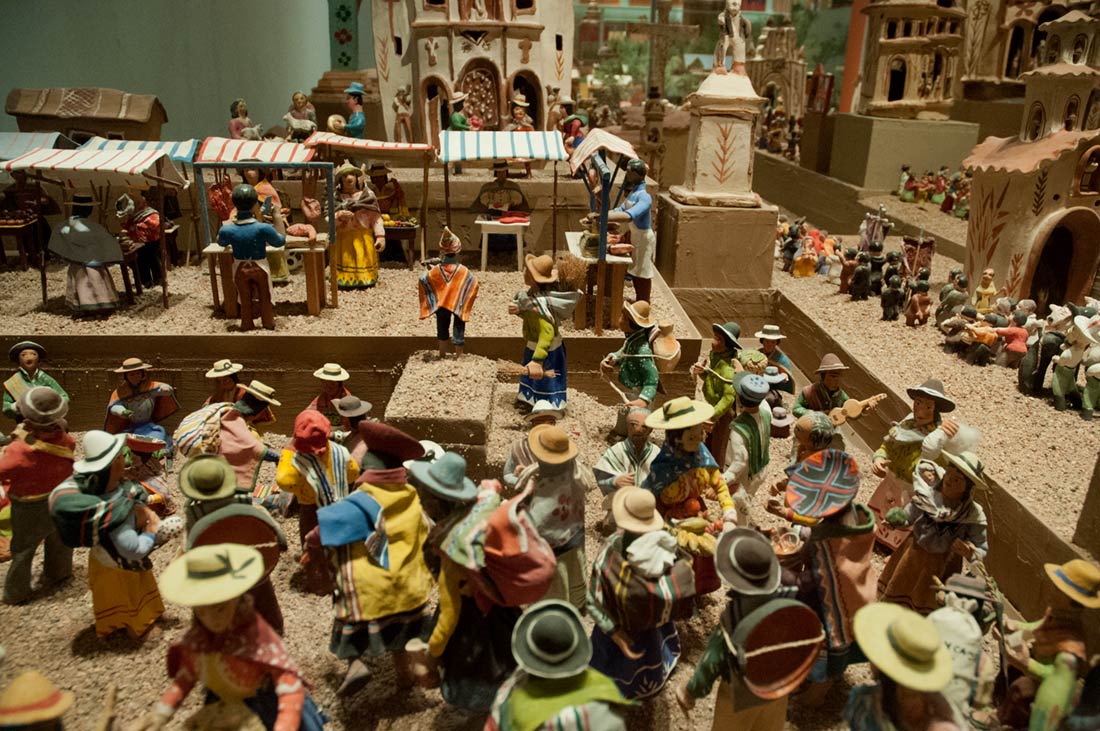
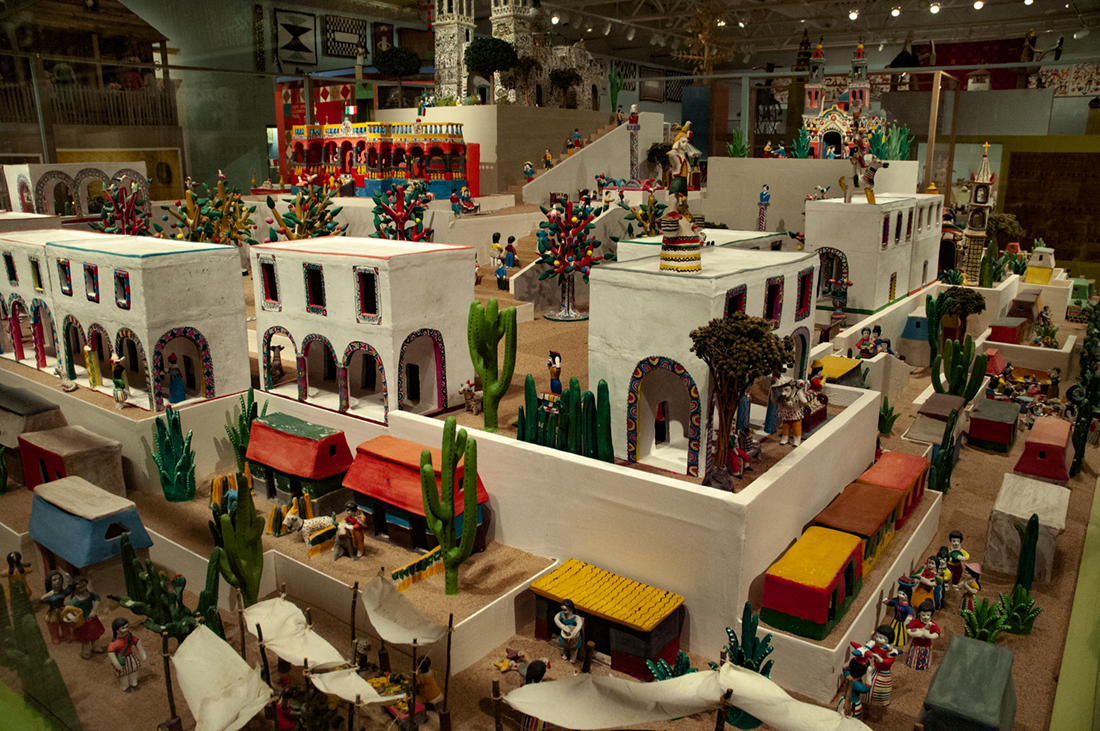
The tradition of the nativity scene village is not just a Catholic one. Such Christmas villages also were made by the Protestant Moravians who settled in Salem, North Carolina, and Bethlehem, Pennsylvania and placed at the foot of Christmas trees. These developed into very elaborate scenes that included sawdust to present the roads leading to the manger, stones and fresh moss and twigs to represent miniature trees. As the scenes grew in size, parts of them began to be placed on fireplace mantels and tables and include other stories from the Bible such as Noah’s ark, which could have hundreds of tiny animal figures on their way to the Ark. Eventually, non-religious figures began to be added and separate areas with different themes were set up such as farms and village scenes. Toy trains also joined the scenes.
Check out these related items
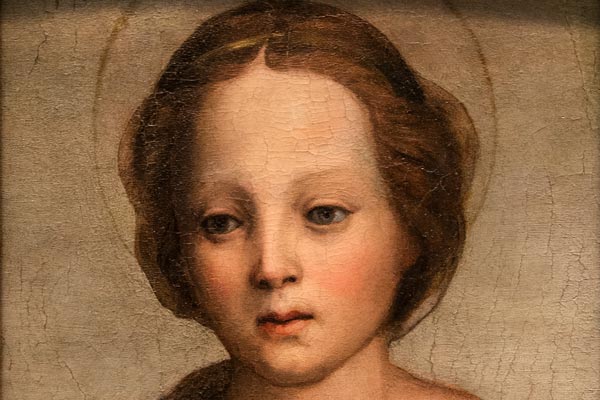
Portraits of Mary
Mary, the mother of Christ, may be the most prominent visual icon in the world. We explore her history.
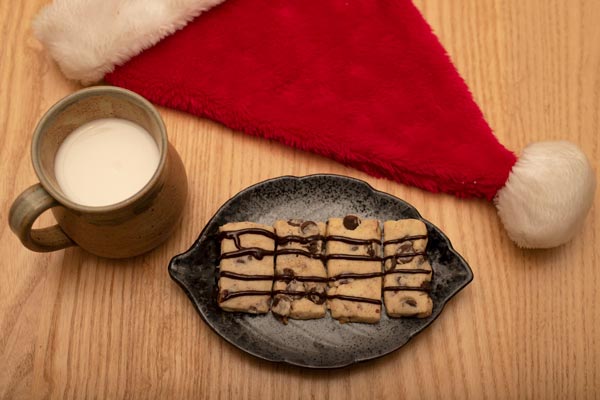
Shortbread - Santa’s Favorite
Here's a Christmas secret - Santa prefers shortbread to sugar cookies. Here's a shortbread recipe to keep him happy and plump.
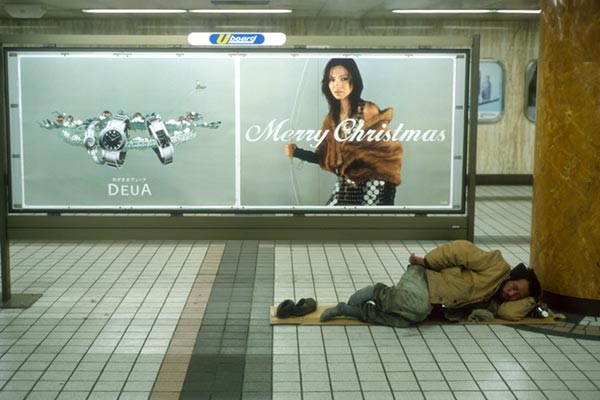
Wise Men Came Bearing Gifts
We all want to give during the holiday season. Here are some tips on how to give wisely and well.
